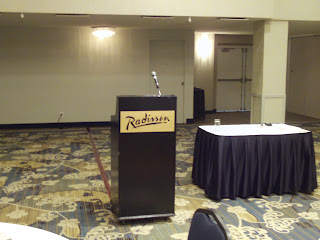A boring sales presentation does not motivate your listeners to buy. They might stop listening. They might be annoyed. They might even leave the room. They won't feel interested to buy. Avoid these sales presentation mistakes as described by Kelley Robertson.
--------------------------
Unfortunately, many sales people bore their prospects. Here are eight ways they do that.
1. Start your pitch by talking about your company
Your marketing department might think it’s important that you tell your prospect about your company’s roots or heritage, the client or organizations you work with or how innovative you are.
I can tell you from first-hand experience that those points aren’t even on their radar. They don’t care about you.
I know…it hurts, right?
But here’s the reality…
All they want to know is how you can help them solve a pressing that they’re struggling with.
Skip the mindless chatter about anything else. Get to the point and show them how you can help them deal with, or eliminate, that problem.
2. Talk endlessly about your product, offering or solution
Next to the above point there is no quicker way to bore a prospect or customer.
Contrary to popular belief people don’t want to know EVERYTHING about your product. They only need to know the aspects or features that are relevant to their specific situation.
Highly analytical or technical people—especially engineers—struggle the most with this because they love detail, data and information.
However, it is critical to understand that most people don’t need this level of detail. It is more effective to present the high-level information and have back-up documentation ready just in case your prospect is also a detail-oriented person.
3. Make the conversation one-way
Remember that presentation I mentioned at the beginning of this post?
The sales guy used all the air-time for the full 30 minutes. Snore…
Telling is not selling.
I have found that it is much more effective to have a two-way dialogue during any type of sales meeting or presentation. Even if you have a pre-planned presentation, you should still get your prospect involved by asking them questions or getting them to comment on a point you have made.
Read the rest of these Eight Ways to Deliver a Boring Sales Presentationhttp://fearless-selling.ca/how-to-bore-your-prospect/ at Kelley Robertson's Fearless Selling Blog.
Presentation Tips on Twitter Presentation Skills Club on Facebook
Executive Speech Coach, Business presentation tips from George Torok, the Speech Coach for Executives




